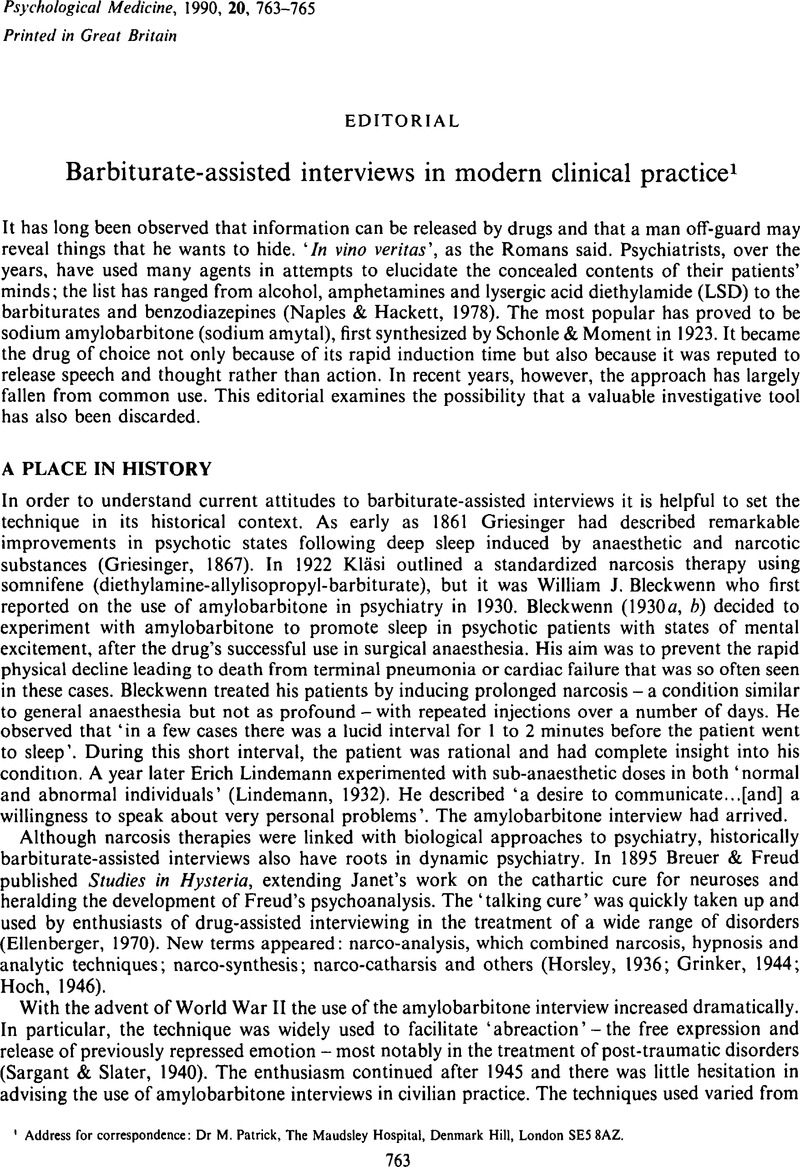Crossref Citations
This article has been cited by the following publications. This list is generated based on data provided by Crossref.
Sivakumar, K.
Mills, C. S.
and
Gupta, K.
1991.
Abreaction before ECT?.
British Journal of Psychiatry,
Vol. 159,
Issue. 3,
p.
444.
Conway, Alison
1993.
Difficulties in Managing a Case of Stupor.
British Journal of Psychiatry,
Vol. 162,
Issue. 6,
p.
826.
Fackler, Sondralyn M.
Anfinson, Theodore J.
and
Rand, Julie A.
1997.
Serial Sodium Amytal Interviews in the Clinical Setting.
Psychosomatics,
Vol. 38,
Issue. 6,
p.
558.
Wilson, Simon
2002.
Survey of the use of abreaction by consultant psychiatrists.
Psychiatric Bulletin,
Vol. 26,
Issue. 2,
p.
58.
McKay, Gavin C. M.
and
Kopelman, Michael D.
2009.
Psychogenic amnesia: when memory complaints are medically unexplained.
Advances in Psychiatric Treatment,
Vol. 15,
Issue. 2,
p.
152.



